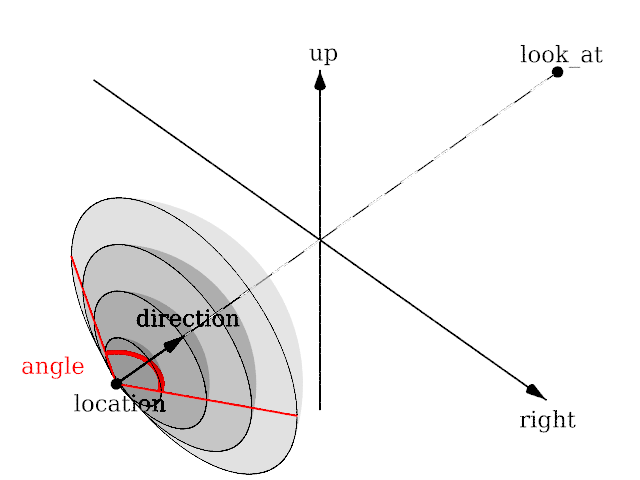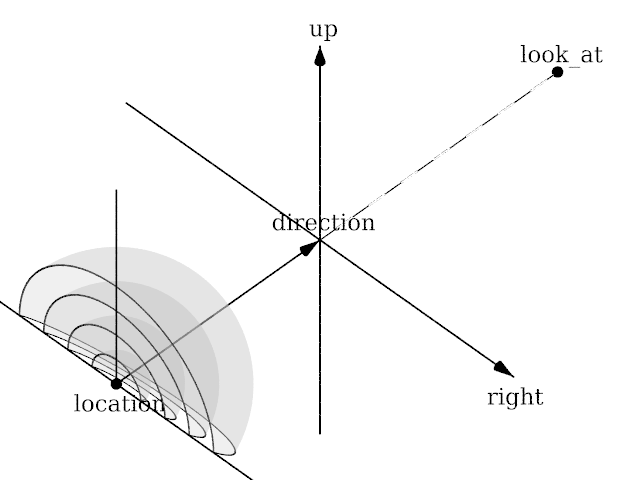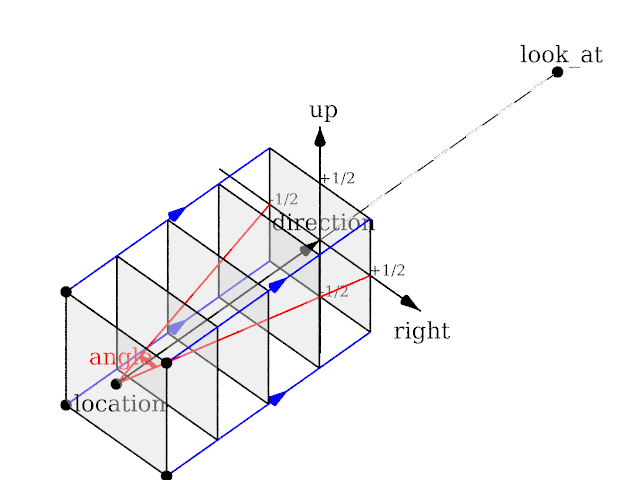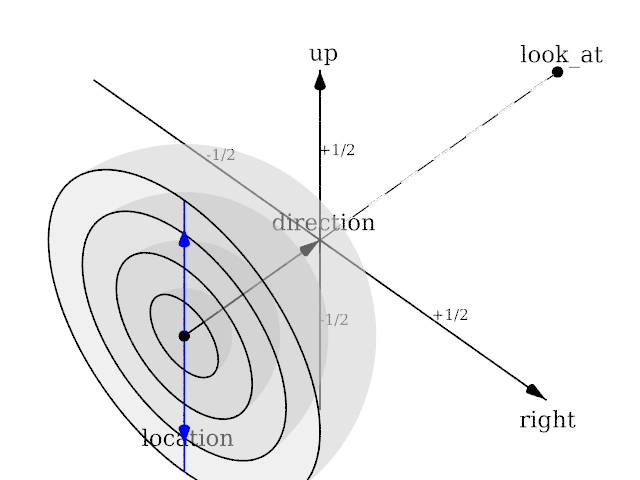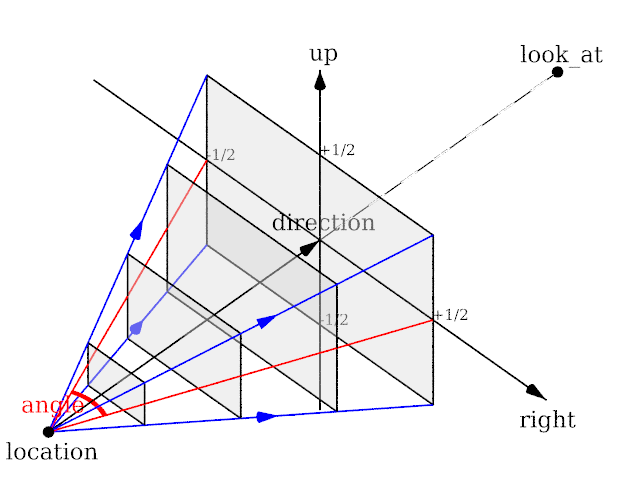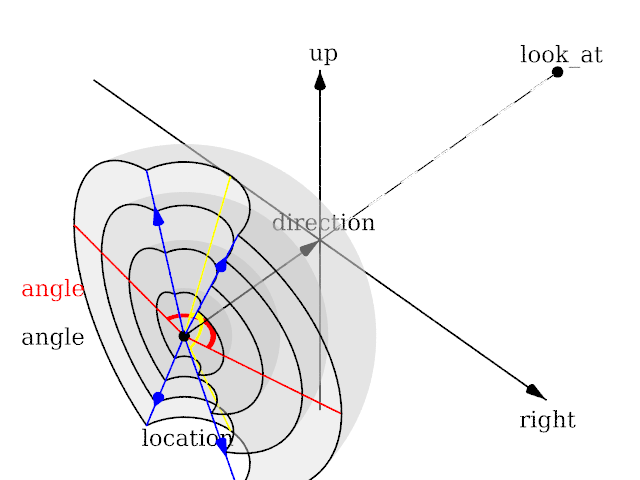Documentation Talk:Reference Section 3
Camera
Fisheye
|
The fisheye projection |
Length of direction, up and right are irrelevant. Angle is the important setting and can go up to 360.
omnimax
|
The omnimax projection |
Angle is irrelevant. The relative length of up and right are important.
orthographic
|
The orthographic projection |
Length of direction is irrelevant unless angle is used. Lengths of up and right define the dimensions of the view. Angle can be used (as long as less than 180) and will override the length of right and up (the aspect ratio between up and right will be kept nevertheless) with a scope of a perspective camera with the same direction and angle.
panoramic
|
The panoramic projection |
Angle is irrelevant. The relative length of direction, up and right are important as they defines the lengths of the 3 axis of the ellipsoid. With identical length and orthogonal vectors (both strongly recommended, unless used on purpose), it's identical to a spherical camera with angle 180,90.
perspective
|
The perspective projection |
Angle can be used as long as less than 180 and will recompute the length of right and up using direction, while keeping the aspect ratio between up and right.
spherical
|
The spherical projection |
Lengths of direction, up and right vectors are irrelevant. Angle is the important setting, and it gets two values separated by a comma: the first is the horizontal angle, the second is the vertical angle. Both values can reach 360. If the second value is missing, it get half the value of the first.
here after some editorial changes that might need review. --Le Forgeron 09:12, 2 October 2011 (UTC)
- in section Placing the Camera (3.3.1.1)
The POV-Ray camera has ten different models,
well, it is not ten (10). If cylindrical & mesh are counted for 1 each, there is 9. perspective (1), orthographic (2), mesh(3), fisheye (4), ultra wide angle (5), omnimax(6), panoramic (7), cylindrical (8), spherical (9) (notice: I used the order and number of sub-sections) If cylindrical and mesh are counted as many (4 cylindrical, 1 or 4 mesh), it is either 12 or 15.
- in section Orthographic camera (3.3.1.2.2, end of section)
If objects are too close to the camera location they may disappear. Too close here means, behind the orthographic camera projection plane (the plane that goes through the look_at point).
It's not look_at, but location point .
- all camera type: it would be nice to get a small sampling (i.e. an image about a fourth of the width of column, so as to have the text on the side) which illustrate each type of camera. Do we have a "typical scene" ?
- bokeh pigment would get clearer with pictures inspired from the megapov documentation.(pigment & result) (and from a strict vocabulary point, bokeh is not that kind of usage... well, should I trust wikipedia on bokeh ?)
--Le Forgeron 09:12, 2 October 2011 (UTC)
- Thanks for the follow up, the 1st two technical corrections you listed above have been done. Maybe you could expand a bit on the last two items as I'm not clear on what you are suggesting.
--jholsenback 14:27, 2 October 2011 (UTC)
